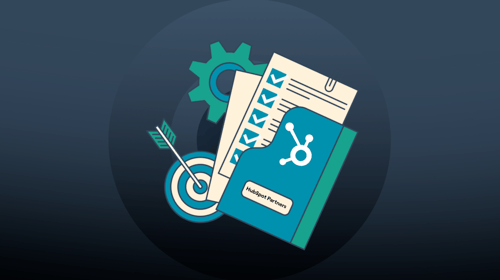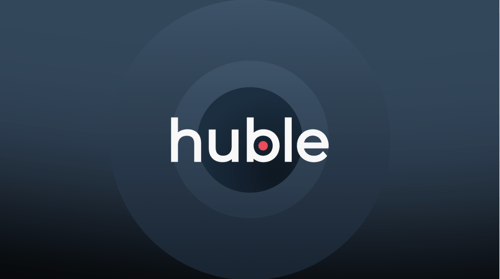If you want to streamline your lead management and improve your marketing and sales activity at every stage of the sales cycle, you should use lifecycle stages.
Simply put, lifecycle stages help you to organise and segment your contact database based on where individual contacts are in your sales cycle. For example, if you have a brand-new lead who has only just converted on your website, you can separate them from contacts who have been speaking to your sales team for six months and shown signs of being ready to buy.
Lifecycle stages also help you to more effectively manage your contacts, as well as allow your marketing and sales teams to tailor their activities and interactions to help move leads and/or contacts towards a sale.
Within HubSpot, you can manage your contacts into the following lifecycle stages: subscriber, lead, marketing qualified lead (MQL), sales qualified lead (SQL), opportunity, customer and evangelist. These lifecycle stages cannot be customised or removed – but you can create your own custom lifecycle stages to accommodate any additional stages in your business’ sales cycle if you need to.
In this blog, we’ll explain how and why you should use the lifecycle stage property in HubSpot.
Why should you use the lifecycle stage property in HubSpot?
The main reason to use lifecycle stages within HubSpot is to be able to segment your contact list, and personalise your marketing and sales activity based on where contacts are in the sales cycle.
Think about it. If you know where contacts are in the sales cycle – as well as which blogs they are interacting with and which web pages they are viewing – you can use that information to send them more relevant content, or use it as a buying signal for a sales person to reach out.
EXAMPLE
You notice that you are generating a large number of leads through the use of middle-of-the-funnel eBooks and gated video demos – but while your marketing team have confirmed that these leads are a good fit, your sales team are saying that these contacts are not yet “sales ready”.
Therefore, to understand the current state of your contact database, you create a list to segment your contacts based on the MQL lifecycle stage. The list shows you all your current MQL contacts and what they have engaged with and you find that the vast majority of them have been looking at your other middle-of-the-funnel content assets for further education.
So, to nurture these leads to a point where they are ready to speak to a salesperson, you create an email campaign specifically for MQLs, advertising other middle-of-the-funnel content assets to increase engagement and educate your contacts until they are ready.
Defining your HubSpot lifecycle stages

Firstly, you will want to define each individual stage specifically for your business.
In order to differentiate the stages and understand the criteria for each, it’s important to ask the following questions:
- What do people in this particular stage do?
- Where have they come from?
- What’s differentiates this stage from the previous or next one?
- What’s the criteria for this stage?
- What’s the goal of this stage?
For example, if we were to take the lifecycle stage of Subscriber and compare it to Lead, subscribers are those who have signed up to receive blog notifications from you and nothing else. Leads, on the other hand, will not only have subscribed to your blog but also perhaps demonstrated an interest in what your business offers and will have shared their personal information to obtain content on your website. See how the two stages differ? The important bit here is you physically writing down the differences.
Once you have set up your lifecycle stages, you will need to segment your existing contacts to filter contacts into their appropriate lifecycle stage.
Segmenting your contacts in HubSpot
To segment your contacts in HubSpot, you will first need to create a list using the list tool in HubSpot. The list tool allows you to break your contact database down based on specific information you have on your contacts – this could be anything from location, email address, job title, and company, to if they have clicked on a particular button on your website, or viewed a certain amount of pages.
So if you wanted to create a list of MQL contacts based on whether or not they have viewed a specific page on your website, you can do so!
Using workflows to assign lifecycle stages
In our blog ‘How HubSpot can improve your marketing and sales lead handoff process’, we explained how you can use HubSpot’s workflows to automate lead qualification, management and handoff.
What does this mean? Well, instead of manually assigning lifecycle stages to your contacts based on the actions they take on your website – you can create a workflow to automatically assign contacts to specific lifecycle stages depending on what they do on your website, or the actions they take.
For example, a website visitor fills in a specific form on your website and downloads a content offer. Upon filling out that form, a contact record is created for that website visitor and their lifecycle stage is updated to ‘lead’ as they have fulfilled the criteria for becoming one. Two days later, however, that contact completes a ‘request a demo’ form – meeting the criteria for a SQL. Fortunately, as you have set up a workflow to upgrade contacts to SQL status based on actions like this, HubSpot automatically updates that contact’s record, changing their lifecycle stage from ‘lead’ to ‘SQL’, and your sales team doesn’t have to update that contact manually in the CRM. See how easy that is?
Understanding where your leads are in the sales cycle will not only allow you to refine your marketing and sales activity, but also to better help your prospects by delivering more relevant and timely interactions.
At Huble Digital, we run in-depth lead management workshops to help businesses map out and document their lead management process, as well as build out the workflows required to support it. If you want to book a meeting to find out more about our lead management workshops, please click here.










-3.png?width=500&height=320&name=Matt%20-%20imagery%20bank%20(8)-3.png)

